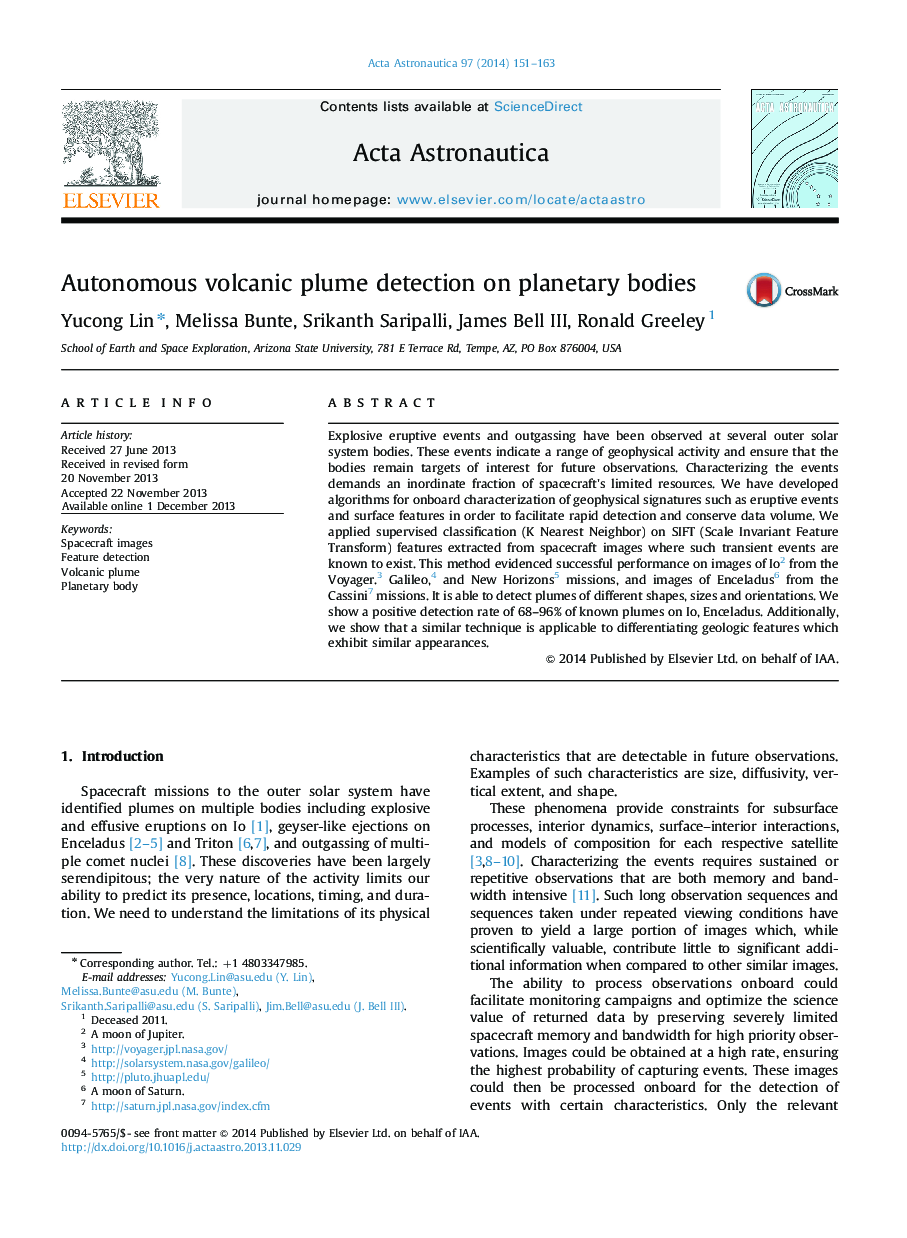| Article ID | Journal | Published Year | Pages | File Type |
|---|---|---|---|---|
| 1714755 | Acta Astronautica | 2014 | 13 Pages |
Abstract
Explosive eruptive events and outgassing have been observed at several outer solar system bodies. These events indicate a range of geophysical activity and ensure that the bodies remain targets of interest for future observations. Characterizing the events demands an inordinate fraction of spacecraft's limited resources. We have developed algorithms for onboard characterization of geophysical signatures such as eruptive events and surface features in order to facilitate rapid detection and conserve data volume. We applied supervised classification (K Nearest Neighbor) on SIFT (Scale Invariant Feature Transform) features extracted from spacecraft images where such transient events are known to exist. This method evidenced successful performance on images of Io2 from the Voyager.3 Galileo,4 and New Horizons5 missions, and images of Enceladus6 from the Cassini7 missions. It is able to detect plumes of different shapes, sizes and orientations. We show a positive detection rate of 68-96% of known plumes on Io, Enceladus. Additionally, we show that a similar technique is applicable to differentiating geologic features which exhibit similar appearances.
Keywords
Related Topics
Physical Sciences and Engineering
Engineering
Aerospace Engineering
Authors
Yucong Lin, Melissa Bunte, Srikanth Saripalli, James III, Ronald Greeley,
